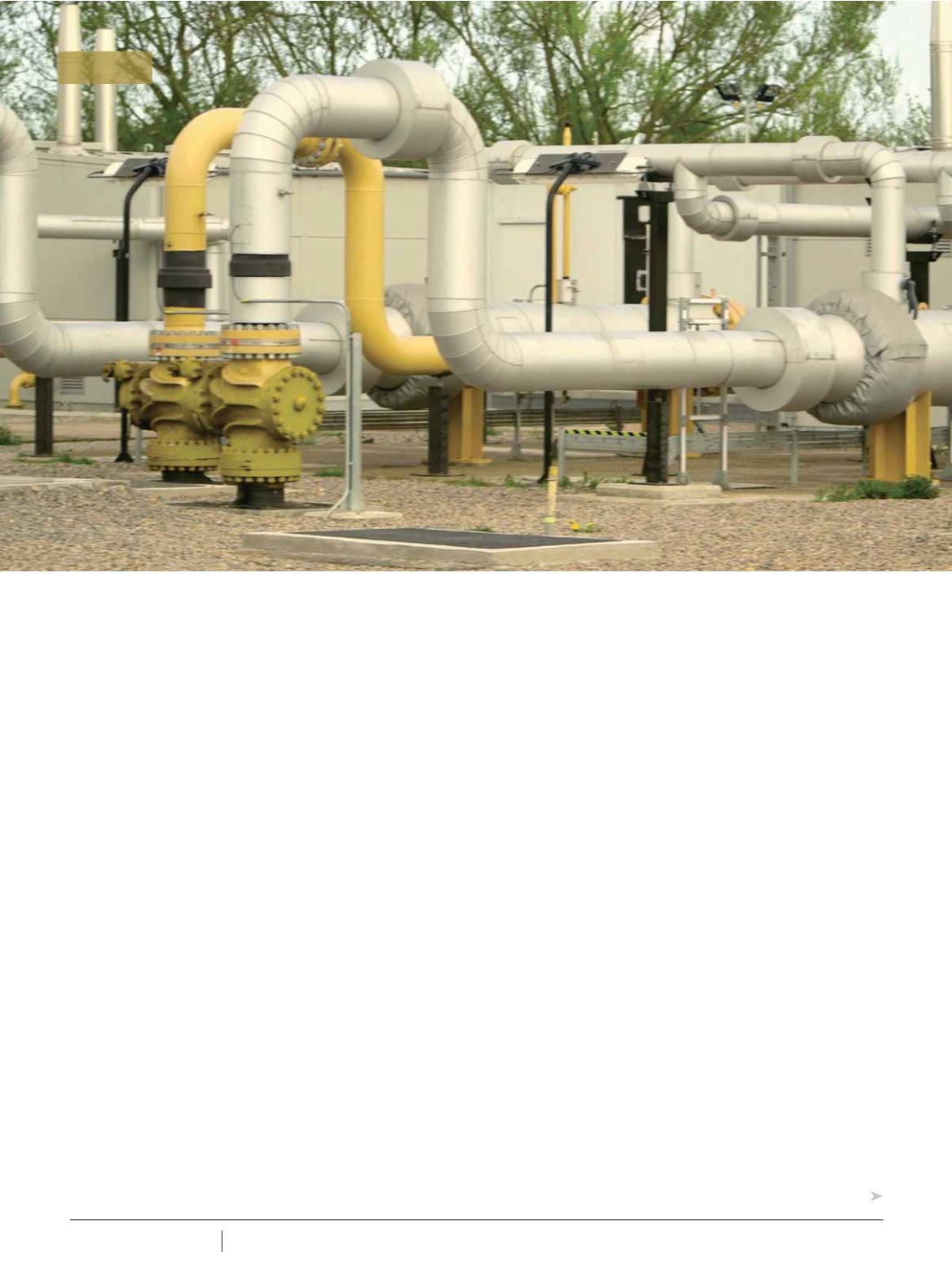

7 6
PLUMBING CONNECTION Summer 2017
HYDROGEN PILOT PROJECT FOR
SOUTH AUSTRALIA
T
he UK Government has committed to reducing carbon
emissions by 80% of 1990 levels by the year 2050.
Natural gas (mainly methane) is a much cleaner
fossil fuel relative to coal however it still contributes to
greenhouse gas emissions through the production of CO2.
Hydrogen gas on the other hand emits zero CO2 when it
is burnt. As a result the UK Government has committed to
converting the City of Leeds to hydrogen in a project referred
to as the H21 Leeds City Gate project.
The aim of the project is to determine the technical and
economic feasibility of converting the existing natural gas
network in Leeds to 100% hydrogen. In the H21 project
hydrogen is produced through the steam reforming of natural
gas where the carbon is captured during this process and
then stored underground using Carbon Capture and Storage
Technologies.
Now a “Power to gas” trial has been announced for
South Australia where small quantities of hydrogen will be
injected into Adelaide’s grid. Wollongong based company
Aquahydrex is developing a prototype electrolyser to produce
hydrogen from water. The development of the electrolyser
is being funded through a $5 million grant from the Federal
Government’s Australian Renewable Energy Agency (ARENA).
South Australian gas company, Australian Gas Networks, is
partnering with Aquahydrex to run this trial.
There are two main differences between the H21 project in
Leeds and the South Australian project.
1. Firstly the method by which the hydrogen gas will
be produced. The South Australian project will produce
hydrogen gas through electrolysis where electricity
will be used to split the water molecule H
2
O into hydrogen
and oxygen. Hydrogen production within the H21 Project
on the other hand will be by the steam reforming of
Natural gas.
2. The South Australian pilot project will focus on blending
hydrogen with Natural gas whilst the H21 project involves
converting sections of the city at a time to 100% hydrogen.
The level of hydrogen injected and blended with Natural gas
into the South Australian gas network during the trial will be
limited by the ability of currently installed gas appliances to
safely burn hydrogen.
Is hydrogen gas the solution to fossil fuel emissions? The City of Leeds thinks so, and potentially so
does the South Australian government, but what are the realities for the industry?
Enzo Alfonsetti,
Energy Services Victoria explains.
FUTURE GAS
















